Abstract
1. A novel pathway is described which mediates excitation of hindlimb moto-neurones from contralateral afferents. Stimulation of contralateral limb nerves evoked short-latency (less than 5 ms) EPSPs in 55% of motoneurones tested. 2. The EPSPs were evoked by fast-conducting contralateral afferents activated by electrical stimuli of 1.04-2.5 times nerve threshold. Stimulation of contralateral muscle nerves did not evoke short-latency EPSPs, whereas nerves which contain afferents from distal skin territories (sural, superficial peroneal, tibial and saphenous nerves) did. 3. Central latencies were determined for the EPSPs from the arrival of the earliest components of the afferent volleys at the spinal cord. The earliest latencies were very brief (1.5 ms). These are comparable to the latencies of disynaptic inhibition in rat motoneurones from ipsilateral group I muscle afferents (1.5-1.7 ms). We conclude that a disynaptic relay is likely to be responsible for the earliest of the crossed EPSPs. 4. Short-latency crossed EPSPs were found in all types of motoneurone tested (including both flexor and extensor motoneurones) except in six cells innervating intrinsic foot muscles. In view of the origin and distribution of the crossed EPSPs, their possible functional role is discussed.
Full text
PDF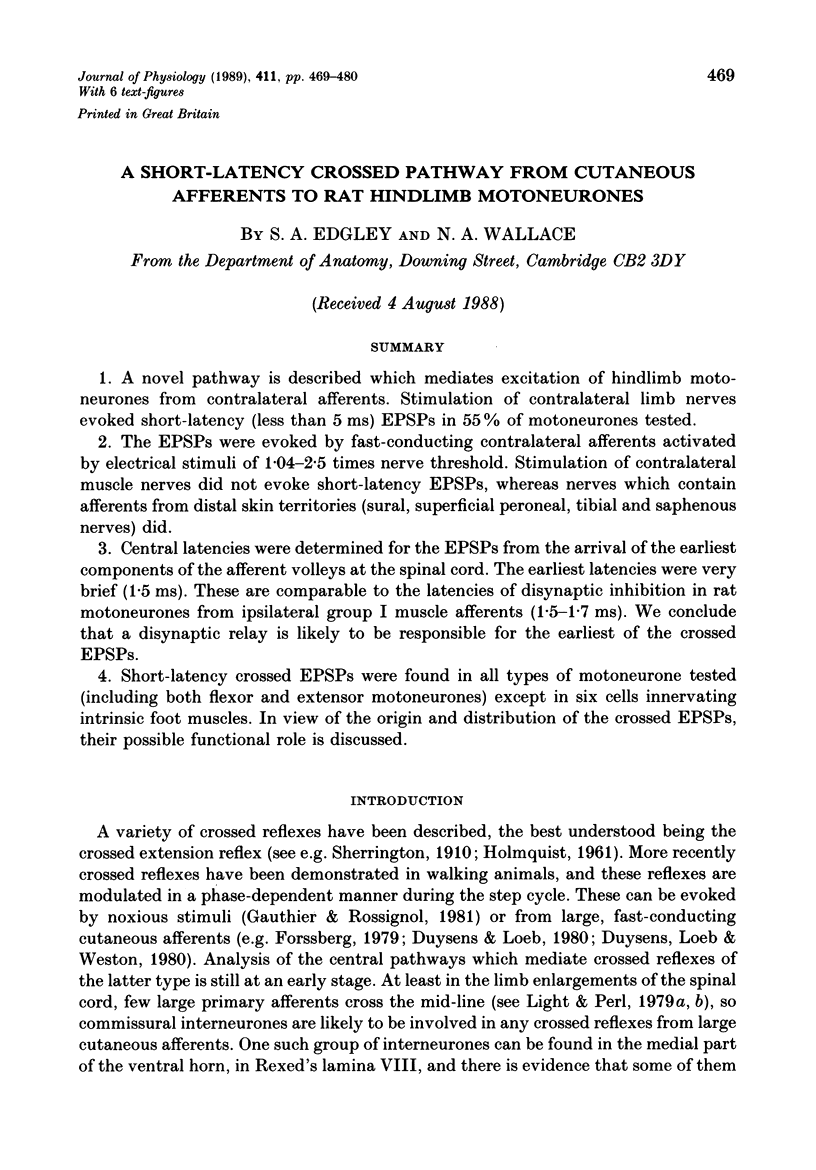
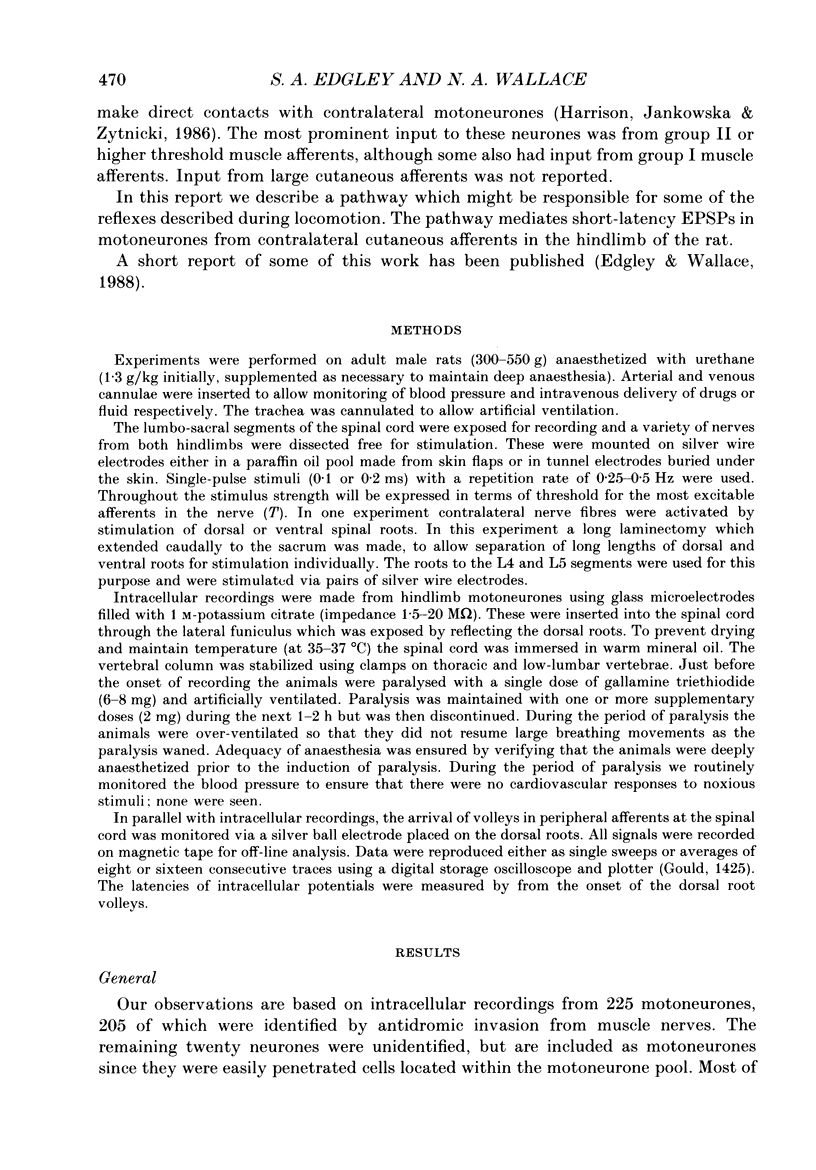
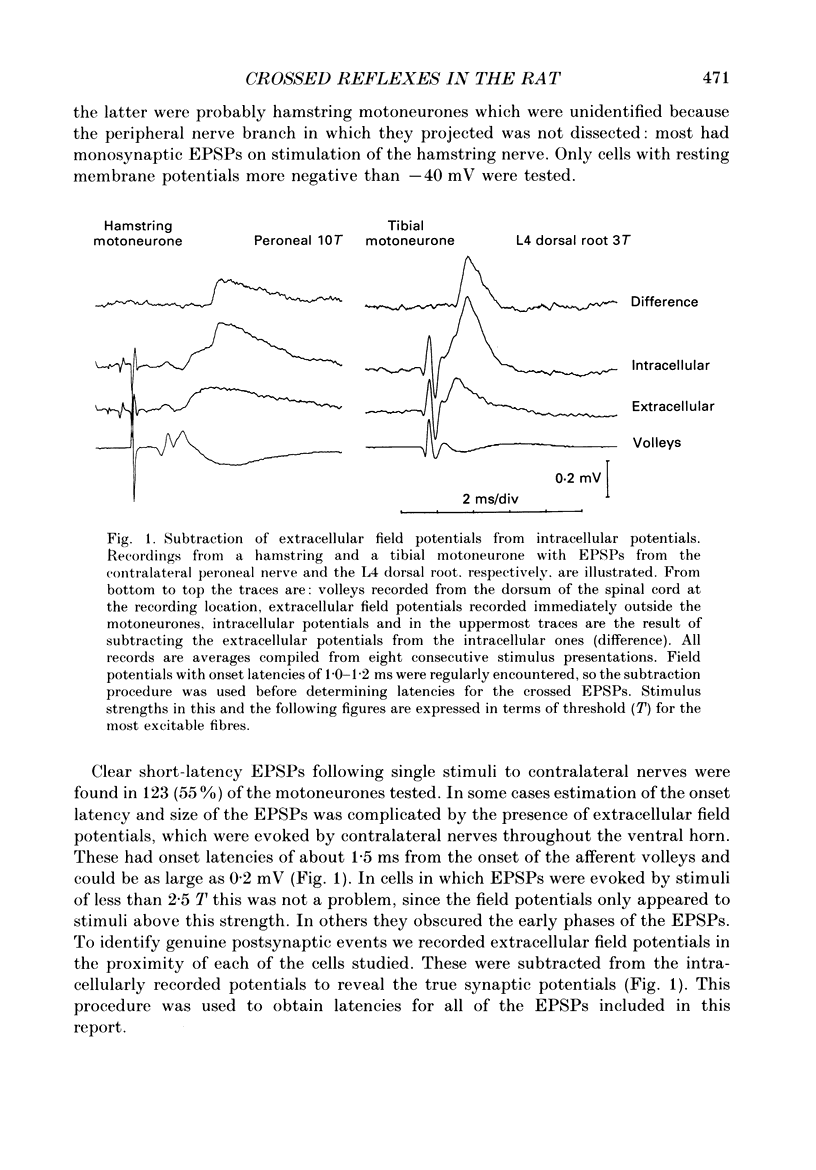

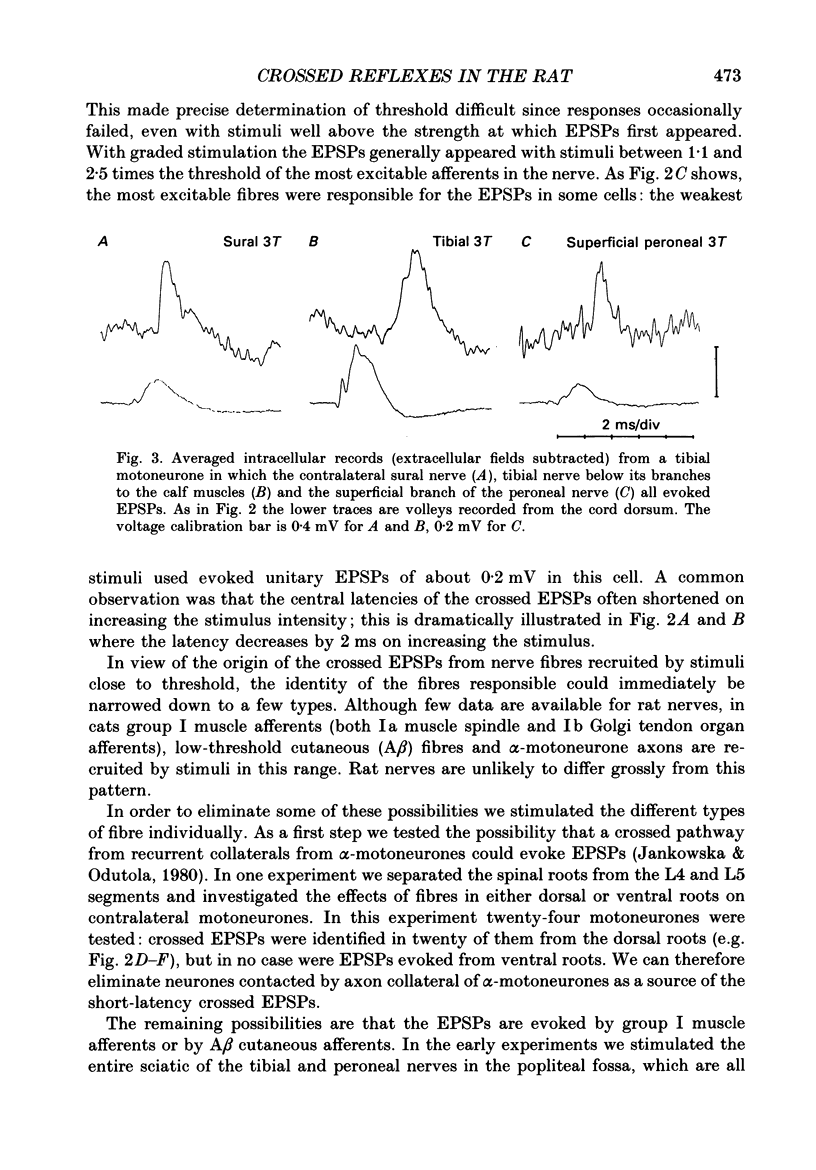

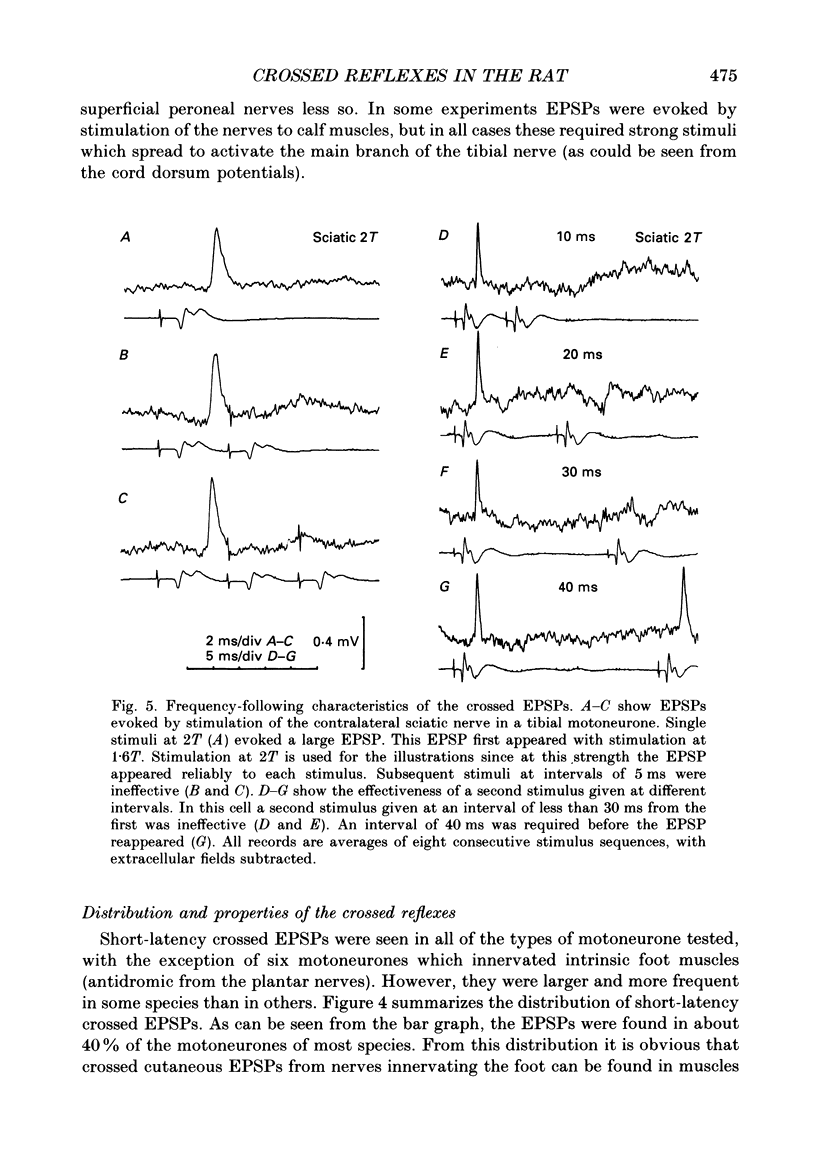
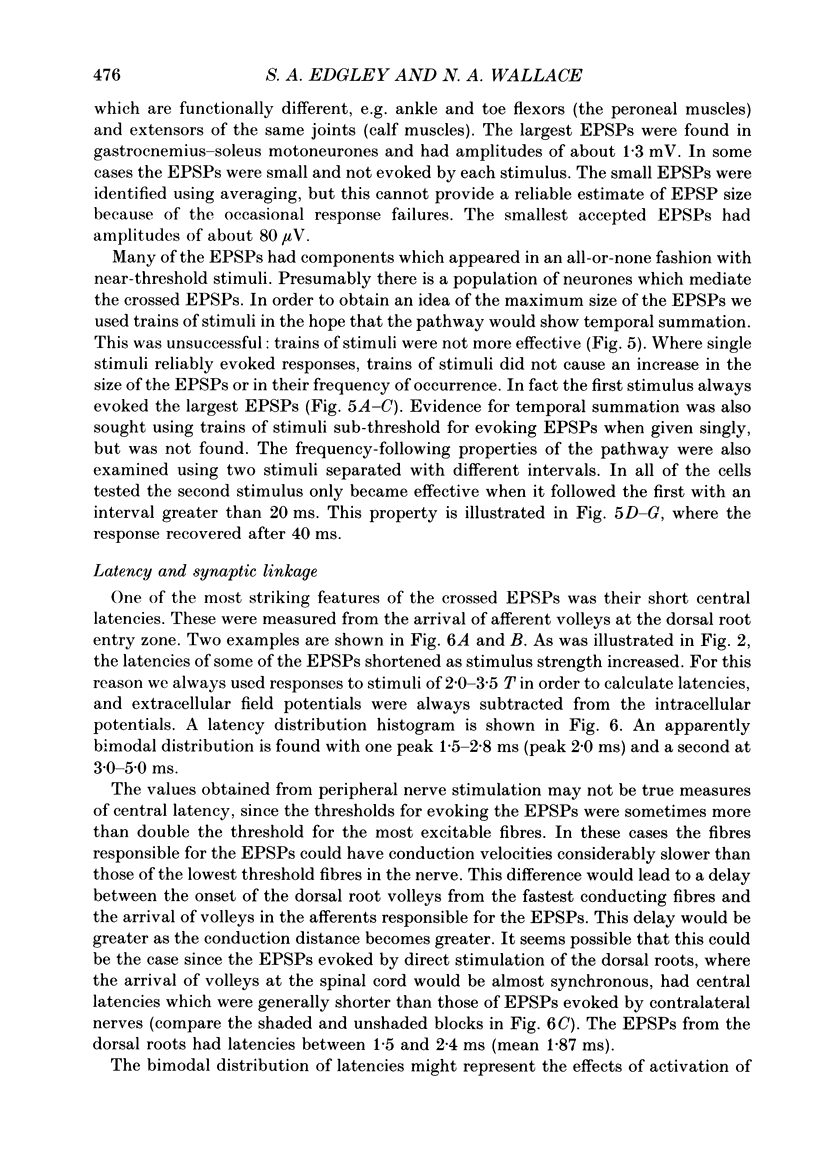
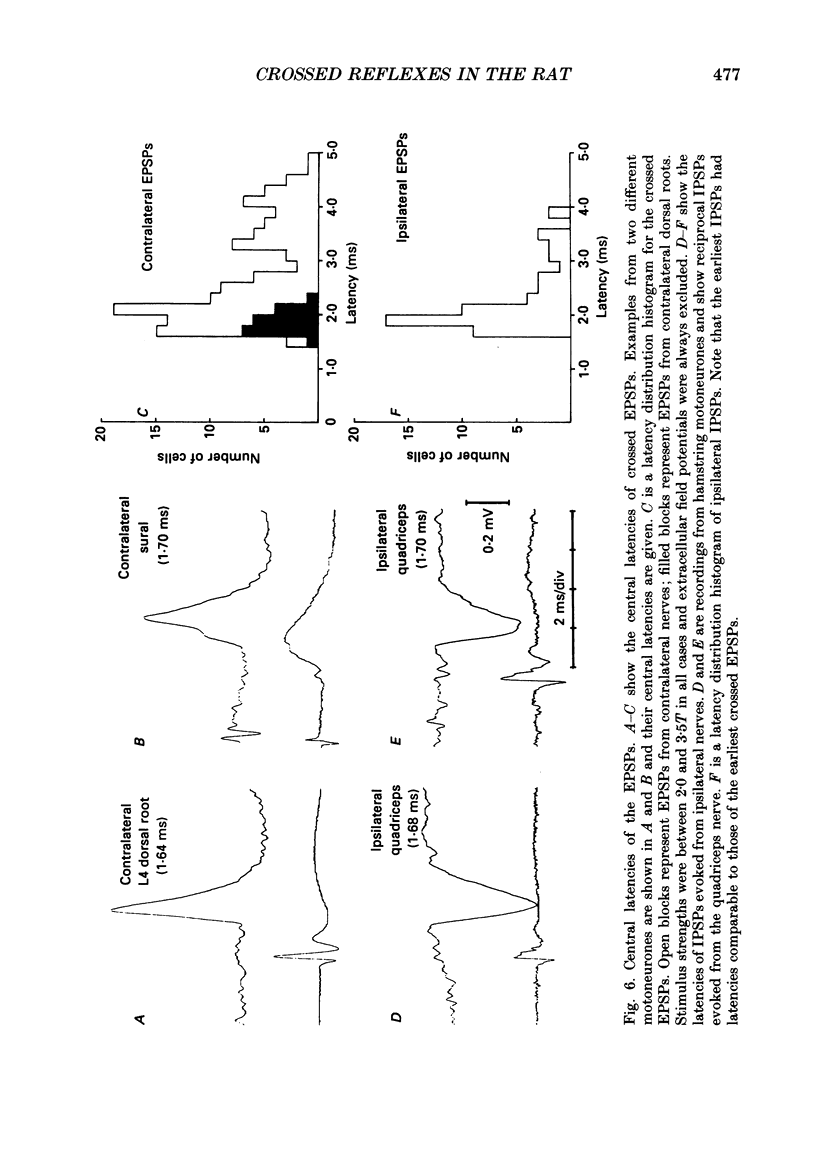
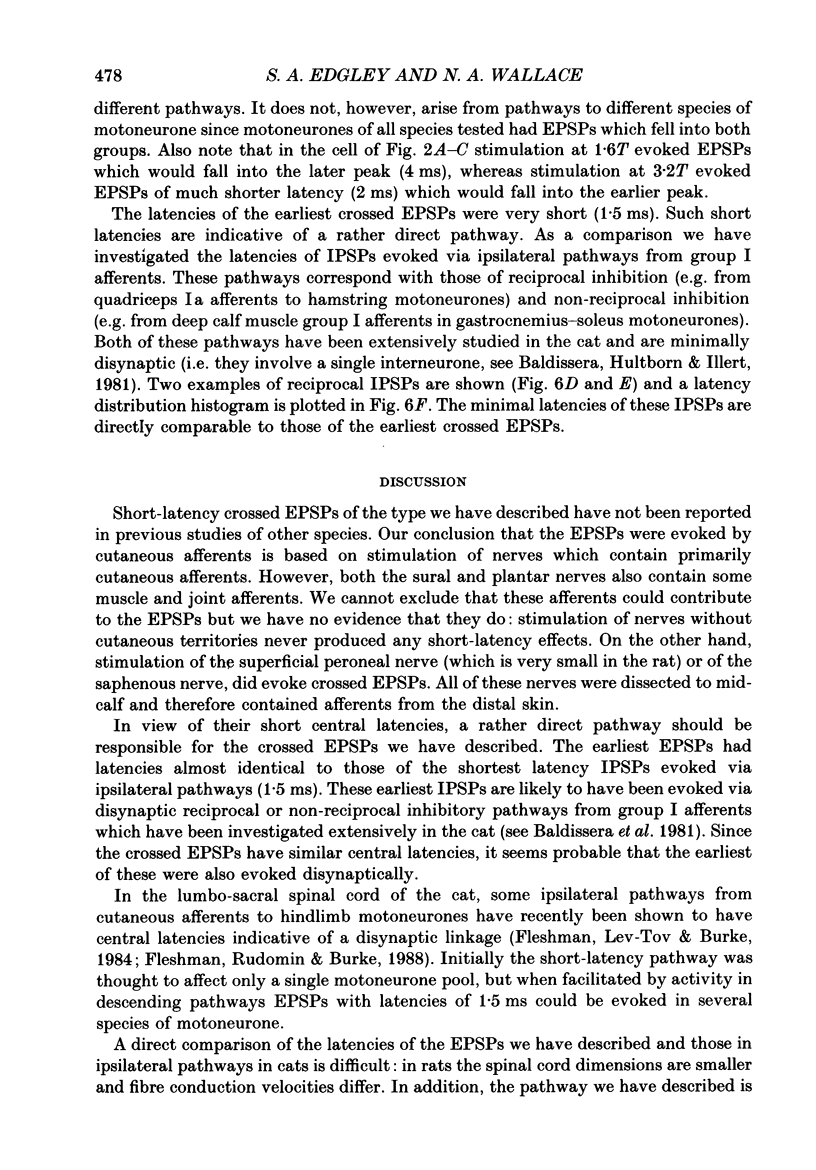
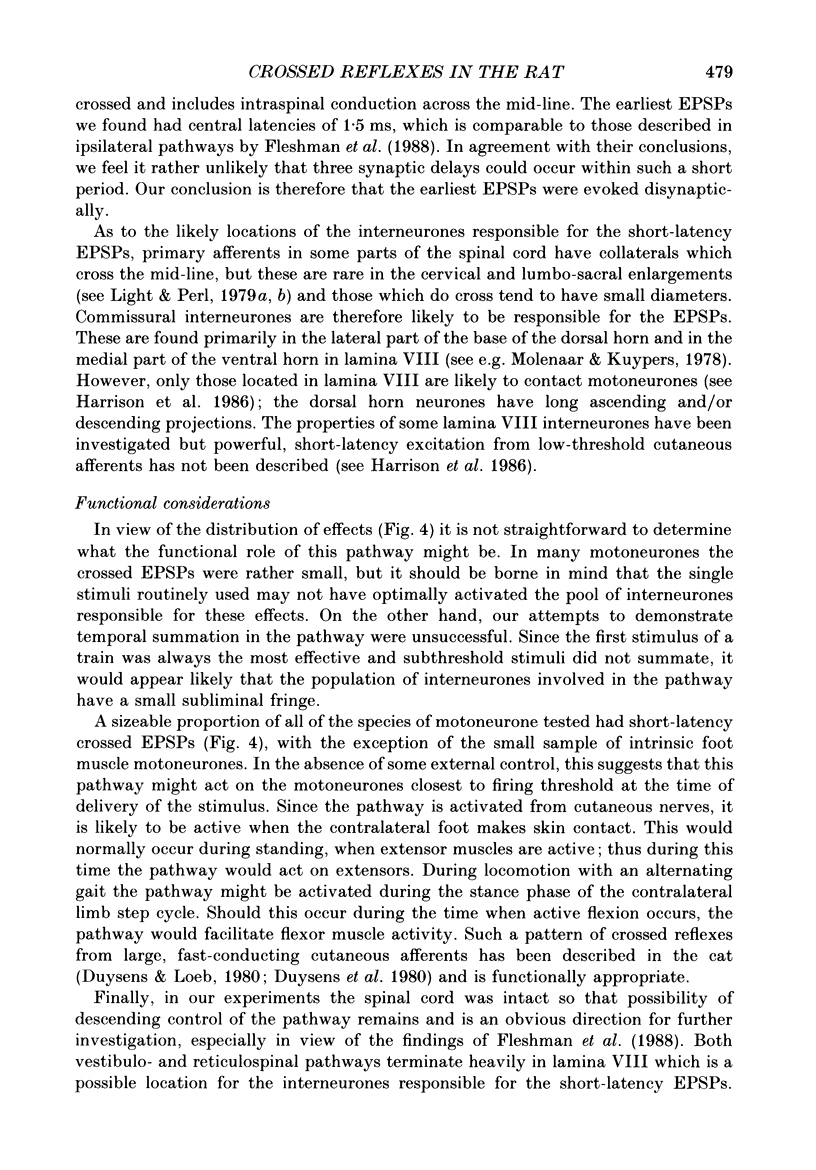
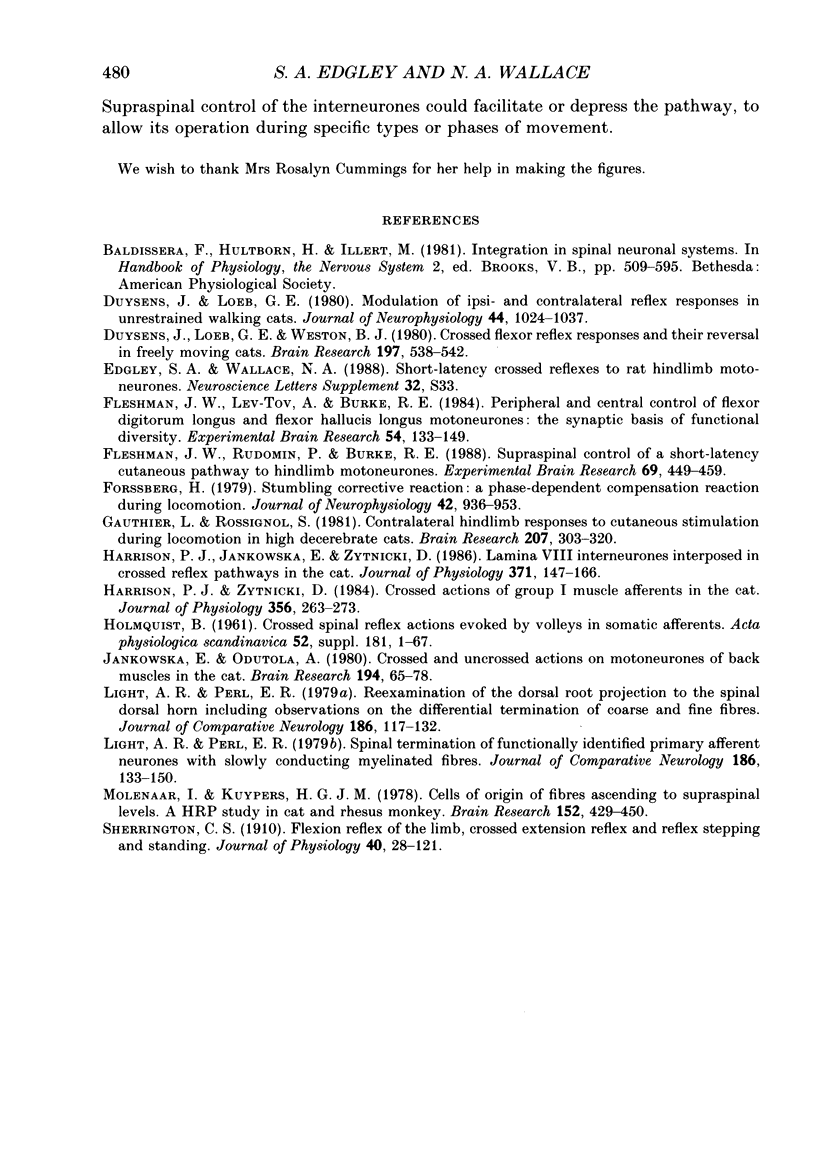
Selected References
These references are in PubMed. This may not be the complete list of references from this article.
- Duysens J., Loeb G. E. Modulation of ipsi- and contralateral reflex responses in unrestrained walking cats. J Neurophysiol. 1980 Nov;44(5):1024–1037. doi: 10.1152/jn.1980.44.5.1024. [DOI] [PubMed] [Google Scholar]
- Duysens J., Loeb G. E., Weston B. J. Crossed flexor reflex responses and their reversal in freely walking cats. Brain Res. 1980 Sep 22;197(2):538–542. doi: 10.1016/0006-8993(80)91143-9. [DOI] [PubMed] [Google Scholar]
- Fleshman J. W., Lev-Tov A., Burke R. E. Peripheral and central control of flexor digitorum longus and flexor hallucis longus motoneurons: the synaptic basis of functional diversity. Exp Brain Res. 1984;54(1):133–149. doi: 10.1007/BF00235825. [DOI] [PubMed] [Google Scholar]
- Fleshman J. W., Rudomin P., Burke R. E. Supraspinal control of a short-latency cutaneous pathway to hindlimb motoneurons. Exp Brain Res. 1988;69(3):449–459. doi: 10.1007/BF00247299. [DOI] [PubMed] [Google Scholar]
- Forssberg H. Stumbling corrective reaction: a phase-dependent compensatory reaction during locomotion. J Neurophysiol. 1979 Jul;42(4):936–953. doi: 10.1152/jn.1979.42.4.936. [DOI] [PubMed] [Google Scholar]
- Gauthier L., Rossignol S. Contralateral hindlimb responses to cutaneous stimulation during locomotion in high decerebrate cats. Brain Res. 1981 Mar 2;207(2):303–320. doi: 10.1016/0006-8993(81)90366-8. [DOI] [PubMed] [Google Scholar]
- Harrison P. J., Jankowska E., Zytnicki D. Lamina VIII interneurones interposed in crossed reflex pathways in the cat. J Physiol. 1986 Feb;371:147–166. doi: 10.1113/jphysiol.1986.sp015965. [DOI] [PMC free article] [PubMed] [Google Scholar]
- Harrison P. J., Zytnicki D. Crossed actions of group I muscle afferents in the cat. J Physiol. 1984 Nov;356:263–273. doi: 10.1113/jphysiol.1984.sp015463. [DOI] [PMC free article] [PubMed] [Google Scholar]
- Jankowska E., Odutola A. Crosses and uncrossed synaptic actions on motoneurones of back muscles in the cat. Brain Res. 1980 Jul 21;194(1):65–78. doi: 10.1016/0006-8993(80)91319-0. [DOI] [PubMed] [Google Scholar]
- Light A. R., Perl E. R. Reexamination of the dorsal root projection to the spinal dorsal horn including observations on the differential termination of coarse and fine fibers. J Comp Neurol. 1979 Jul 15;186(2):117–131. doi: 10.1002/cne.901860202. [DOI] [PubMed] [Google Scholar]
- Light A. R., Perl E. R. Spinal termination of functionally identified primary afferent neurons with slowly conducting myelinated fibers. J Comp Neurol. 1979 Jul 15;186(2):133–150. doi: 10.1002/cne.901860203. [DOI] [PubMed] [Google Scholar]
- Molenaar I., Kuypers H. G. Cells of origin of propriospinal fibers and of fibers ascending to supraspinal levels. A HRP study in cat and rhesus monkey. Brain Res. 1978 Sep 8;152(3):429–450. doi: 10.1016/0006-8993(78)91102-2. [DOI] [PubMed] [Google Scholar]
- Sherrington C. S. Flexion-reflex of the limb, crossed extension-reflex, and reflex stepping and standing. J Physiol. 1910 Apr 26;40(1-2):28–121. doi: 10.1113/jphysiol.1910.sp001362. [DOI] [PMC free article] [PubMed] [Google Scholar]


